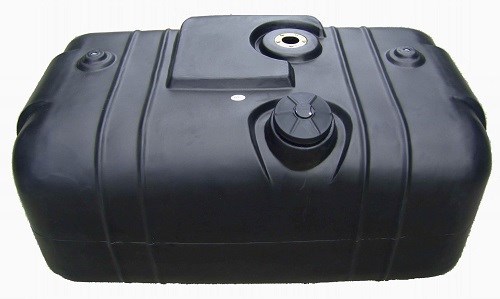The Process Of HDPE-Exfoliated Graphene Nanocomposites For Fuel Tanks
One of ACCE's 2014 best paper awards is on improving the barrier and mechanical properties of HDPE-graphene nanocomposites for automotive fuel tank applications.
There were three best paper award winners just announced by the organizing committee of the (ACCE) for its
fourteenth-annual show coming up Sept. 9-11, in Novi, Mich. I will be attending this event and, judging from the roster of papers to be presented, expect to further report on emerging developments, particularly in the thermoplastic composites arena.
One of the three winning papers, “Processing Methods of High Density Polyethylene-Exfoliated Graphene Nanoplatelet Nanocomposites for Automotive Fuel Tank Applications, is based on a study jointly conducted by the at Michigan State University and the Lead author Keith Honaker, a graduate student at Michigan State University and a 2013-2014 SPE ACCEE graduate scholarship award winner, will discuss how HDPE-exfoliated graphene (GnP) nanoplatelet composites were synthesized and tested.
In order to further enhance the mechanical and barrier properties of the composite, different processing techniques were explored including microlayer coextrusion and solution mixing with sonication followed by extrusion. The researchers investigated multiple modifications to the nanocomposite constituents including cryo-milling of the HDPE pellets and coating the platelets with a wax or polyolefin elastomer before extrusion.
Among the key results: simple melt mixing of HDPE and GnP resulted in an increase in stiffness, a decrease in Izod impact resistance, and a 50% decrease to both oxygen and fuel permeation with 5% wt. GnP. Meanwhile, microlayer coextrusion yielded a high alignement of the nanoplatelets in the direction of the flow and resulted in improved permeation resistance at low GnP concentrations, but did not result in improvement of barrier properties at concentrations above 5% wt.
In contrast, cryo-milling the HDPE pellets into a powder resulted in a minor decrease in mechanical properties and a 35% decrease in oxygen permeation. A wax coating on the platelets before melt extrusion resulted in an increase in both Izod impact resistance and barrier properties, but a decrease in flexural modulus. A polyolefin elastomeric coating on the GnP resulted in retaining the flexural modulus properties with only a slight improvement to Izod impact resistance and barrier properties.
Overall, the researchers concluded that obtaining outstanding barrier properties without affecting the mechanical properties of HDPE-GnP nanocomposites using melt mixing, extrusion and injection molding processes is very challenging. For this reason, the focus of their current research is on combining a few of these methods to create synergistic effects.
Want to find or compare materials data for different
Related Content
-
General Polymers Thermoplastics to Further Expand Distribution Business
NPE2024: Following the company’s recent partnership buyout, new North American geographic territories are in its sight.
-
ICIS Launches: Ask ICIS Generative AI Commodities Assistant
Said to be the first of its kind, this AI assistant will enhance access to ICIS’ intelligence and insights for the energy and chemical markets.
-
TPEs With Higher Levels of Recycled Content
A portfolio of TPE compounds containing postconsumer and/or postindustrial recycled content from Hexpol TPE has been further expanded with grades that feature higher PCR/PIR content for various applications.







